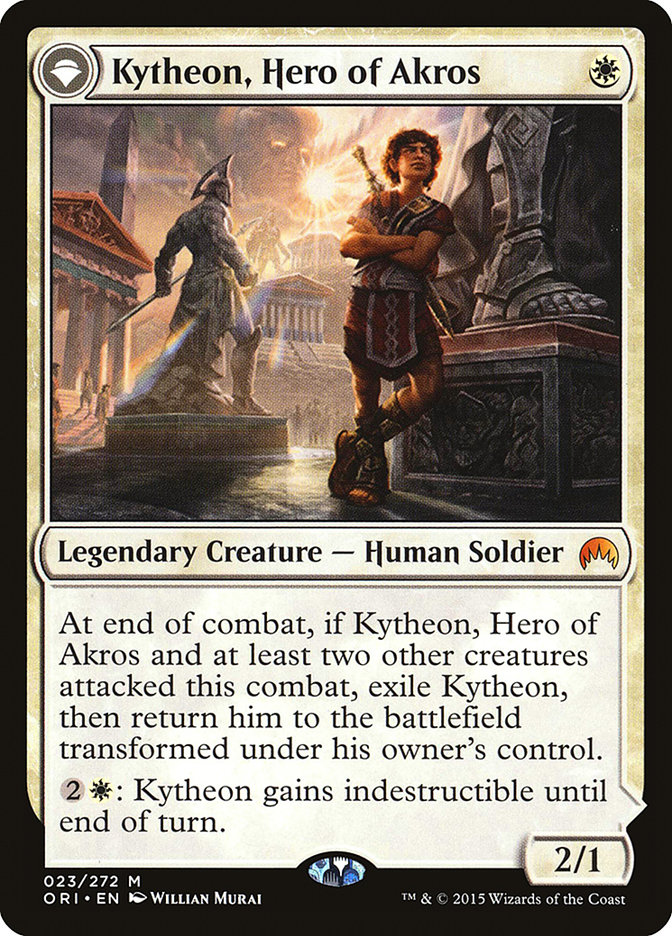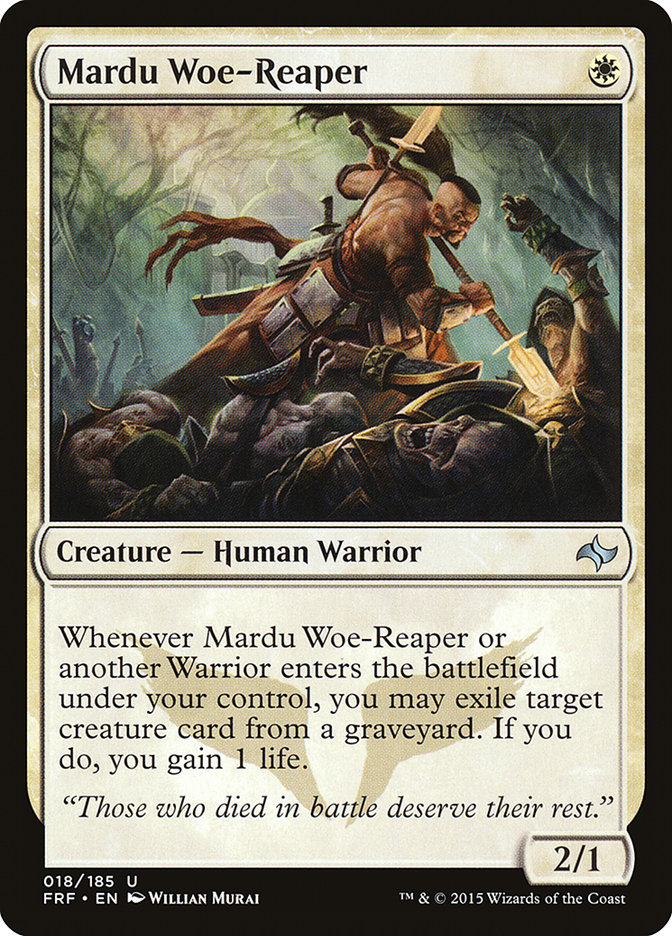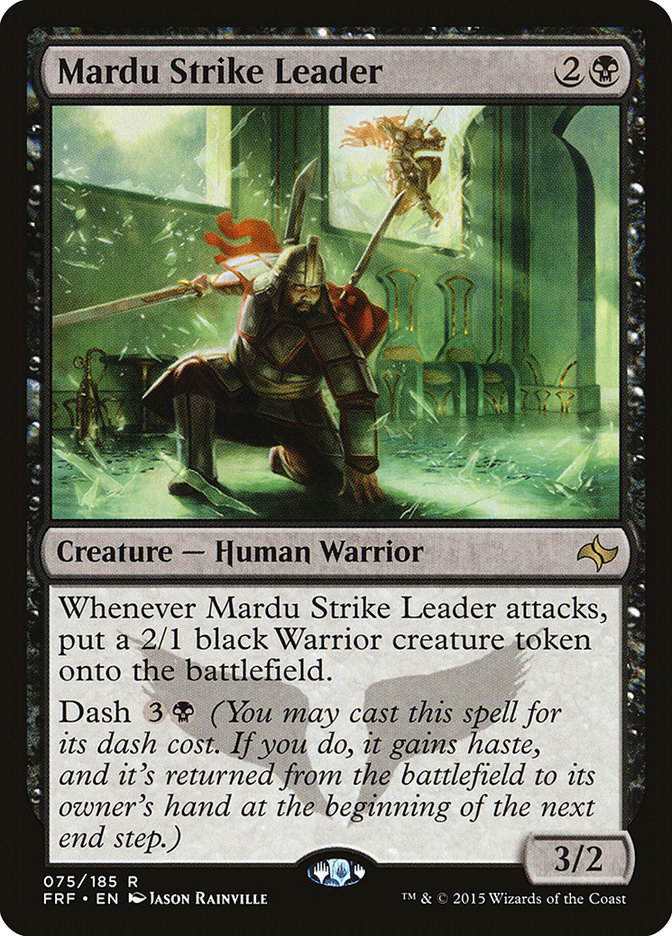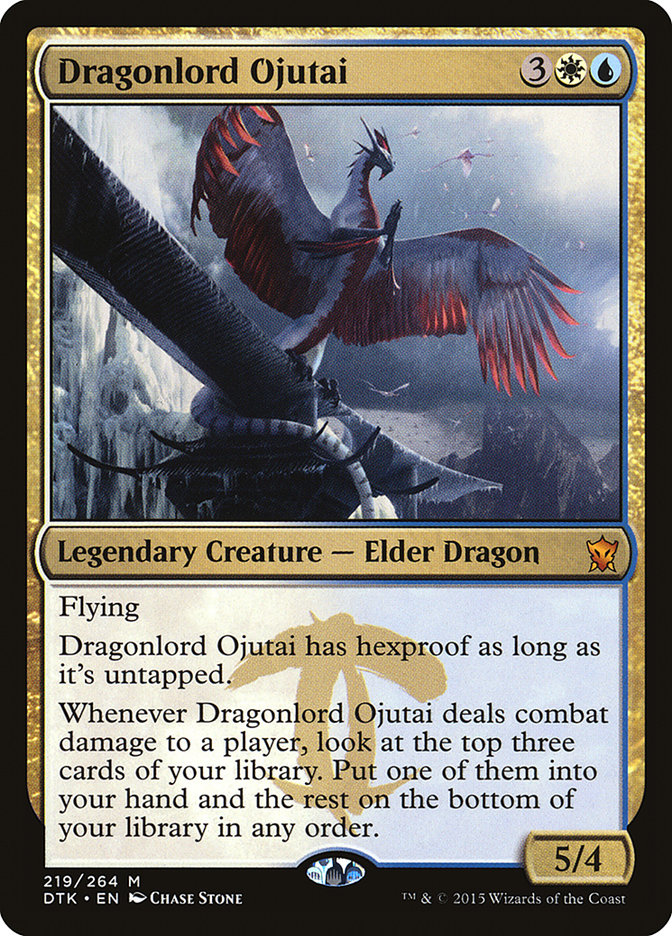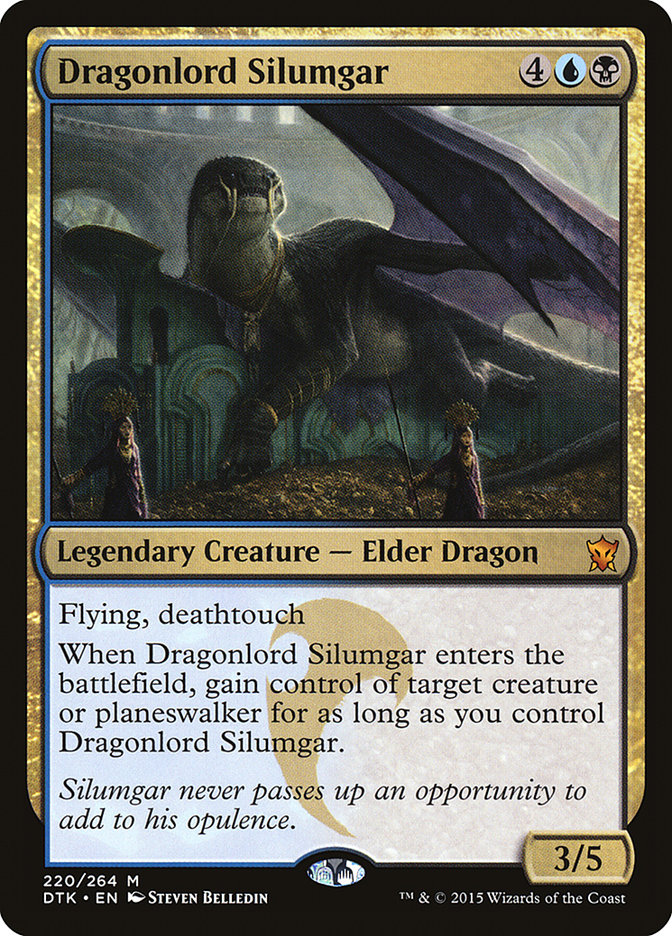The finish line is in sight. My ninth event in ten weeks is this weekend, and then I get break for a few weeks before #GPOak and preparing for #PTOGW. For this weekend, I’ll have to prepare for Standard and Modern. Luckily, those are the formats of my last two events, and Modern at least, doesn’t change much.
Since the last time I made a deck selection for a Modern tournament, the significant data points are the results of that Grand Prix. Notably, I finished x-3 with Lantern, Jeskai Twin won the event, and the rest of the top 4 was G/W Hate Bears and two Affinity decks. Then there’s the Modern Mayhem event on Magic Online, won by W/B Hate Bears.
I don’t expect any of that to really change anything. Twin winning an event is typical, and, from the perspective of a Lantern player, this is a particularly easy Twin deck to beat. Hate Bears is somewhat scary–Dark Confidant is one of the best cards against Lantern, and Flickerwisp removing Ensnaring Bridge can be a big problem. The clock backed with discard and Stony Silence in the sideboard, along with specifically problematic creatures means that this definitely isn’t a deck I’d want to play against. But does anyone really pick up a Modern deck based on it winning a single Magic Online tournament? Honestly, I’ve kinda talked myself into giving it a try. The deck has a lot going for it, and, while I’ve never played it, I’ve always been fairly impressed by the Death and Taxes shell in both Legacy and Modern. If I play Lantern, this deck makes a pretty strong case for putting the Ghirapur Aether Grid back in.
Modern is pretty simple for me at this point, or at least, it can be reduced to a simple decision if I have to, which is good, because I think I need to work on Standard.
This weekend, as predicted, I played W/B Warriors in Standard. After testing Joe Soh’s list from #GPKobe, I was pointed to his brother Terry Soh’s update of his deck. Terry cut Kytheon and added more Gideons and Shambling Vents. I tried that and found the deck far too clunky. My guess is that they modified the deck based on what cards stood out in the tournament, but didn’t test the new deck. The powerful cards obviously stood out, so more were added, but I was getting most of my wins by ending games before they really started–If the battlefield is even on turn 4 and I’m not holding a removal spell, I’m almost ready to concede in most matchups. Gideon can close a game where you’re ahead, and it can reclaim control of the battlefield after a sweeper against a reactive deck. It does good things in the deck, but it has to be backing up real pressure or any midrange deck will overpower you. I ended up hedging, following Terry’s advice, but tempering it, adding one Shambling Vent and one Gideon, Ally of Zendikar, and cutting Kytheon, Hero of Akroas.
Terry also advised siding out Mardu Woe-Reaper against Abzan, which isn’t what I’d been doing. I’d been siding out Mardu Strike Leader. His position is that Mardu Woe-Reaper is just too low impact, and I realized that they don’t have quite as much removal as I imagined, which makes Mardu Strike Leader better than I was thinking. Still, it matches up very badly against Gideon and Anafenza. Thinking back on it, I’ve definitely started losing a lot more against Abzan since reading that advice, so I think I’m going back to how I’d approached the matchup before, and might even put Kytheon back in over the third Gideon.
I played the TCGPlayer 50k in Milwaukee last weekend, and ended with four losses, two to Abzan, one to Four-Color Rally, and one to W/B Control. As stated above, I think I have a new plan for Abzan that I think will help. The W/B Control match was really close, and I would have won if I’d managed to manifest a creature off Mastery of the Unseen instead of three spells. I really like my positioning in that kind of matchup. Four-Color Rally is another story.
Despite the best efforts of Mardu Woe-Reaper, I’ve consistently had problems against them. The real problem is that their creatures just match up too well against what I’m doing; Catacomb Sifter in particular is the biggest problem. It’s two creatures, which makes it good against Blood-Chin Rager, and the size is perfect; three toughness lives though most of my creatures if I don’t have Chief of the Edge, and the 1/1 trades with any of my one-drops. The early blockers like Elvish Visionary and Sidisi’s Faithful really get in the way, and their low curve means that I can’t execute my basic plan of getting ahead and then using removal on everything, especially because they have so much card advantage. I could try to play a dedicated hate card like Hallowed Moonlight, but things are so bad to start with that I don’t think it would do enough to swing the match. I think a better approach might be sideboarding something like Monastery Mentor that tries to give me a better way to win, but they have removal, so it might not be enough.
Standard is diverse enough that it’s okay to have a bad matchup, but I don’t know that that’s the one I’d choose for this event, especially if the red and Abzan matchups are both close, maybe a little behind against red, and optimistically, ahead against Abzan with the better strategy–I really like my positioning against the control decks, but that might just not be what this weekend is about.
So, while I’ve liked Warriors, I might have to branch out. My first impression is that Vikram Kudva’s Esper Token deck that won #SCGDEN actually looks pretty good. My first instinct is that I’d want to try some Painful Truths somewhere in the 75, and that I’m not sure that Dragonlord Ojutai is better than Dragonlord Silumgar.
I like Duress and Monastery Mentor. I like Silkwrap and Jace, Vryn’s Prodigy. Sorin, Solemn Visitor hasn’t impressed me lately, but it’s not bad, and it’s good with Monastery Mentor. I’m not sure that Self-Inflicted Wound is a better way to fight Abzan and Dragonlord Ojutai than Valorous Stance, especially in a deck with Monastery Mentor and Dragonlord Ojutai to protect, and I’m not sure that Infinite Obliteration is a better way to fight Four-Color Rally than Hallowed Moonlight–maybe it matters that you can Infinite Obliteration Ulamog, the Ceaseless Hunger, but I haven’t seen too much of that card lately. At the very least, I think I’d start by splitting the difference.
Months ago, when trying Jeskai Black against Abzan, I was really impressed by Exert Influence against Abzan, especially when combined with Jace, Vyrn’s Prodigy. I’m tempted to try to build a four color control deck that uses Exert Influence, Painful Truths, and Radiant Flames, though maybe mostly in the sideboard. Seeker of the Way is probably the best way to offset Painful Truths, but Soulfire Grand Master is also an option, as are Shambling Vents and Ojutai’s Command. Off the top of my head, that might look something like this:
Creatures (12)
- 4 Seeker of the Way
- 1 Soulfire Grand Master
- 2 Tasigur, the Golden Fang
- 1 Dragonlord Silumgar
- 4 Jace, Vryn's Prodigy
Lands (25)
Spells (23)

Of course, after the fact, I realize that this is very similar to what my teammates Andrew Baeckstrom and Matt Severa played this weekend, finishing 15th and 24th.
I’ve liked “Mardu Blue” (I like the convention of naming four color decks based on the most prominent clan cards they play, so Jeskai Black without Mantis Rider would be Mardu Blue, which is a useful distinction, as Jeskai Black plays like Jeskai because of Mantis Rider, while Mardu Blue plays an attrition game like Mardu, but backed by blue card advantage) since first testing for #PTBFZ, and I think it’s possible that the breakthrough of using Painful Truths rather than Dig Through Time to allow for the use of more delve spells is the key to the archetype.
I think both of these decks might be light on hate for Four-Color Rally for this weekend–Rally preys on attrition decks by sculpting an inevitable end game by scrying while building gradual advantage off its creatures. Sweepers are effective, except that Catacomb Sifter and Grim Haruspex let them use them use the opportunity to set up Rally the Ancestors with Dispel backup after sideboarding. Despite Dispel, I think Hallowed Moonlight is the best way to fight this–catching an early Collected Company seems huge, but more Infinite Obliterations is the other way to go.
I suspect that Four-Color Rally, Atarka Red, and Abzan Aggro will continue to be good decks this weekend, but I’m not really interested in playing them. Rally has slightly too big a target for me to be comfortable with it this weekend, and the others are just styles of decks that I try to avoid whenever I can. I’ll either stick with Warriors, or play some kind of Jace control deck.
For those of you who won’t be making the trip to Las Vegas this weekend and instead will be watching coverage from home, in addition to StarCityGames’ coverage of #SCGINVI, this weekend will feature Wizards of the Coast’s coverage of #MTGWMC. This should provide an interesting and unique take on Standard, as teams around the world try to find the decks with the least greedy manabases in order to support three players on only a single playset of fetchlands.
I think Team Unified Constructed is a really fun format to consider as a mental exercise, and I recommend playing along at home. What decks would you play if you had to build three decks that collectively only used four of each card? If you include a deck like Rally, you’ll mostly be playing spells no one else wants, but can you find two other decks that don’t need Flooded Strand, Polluted Delta, or Windswept Heath?
It’s hard to imagine a team supporting even two three-color decks, which should present a really different take on this format. The most obvious starting point is Atarka Red, but even that tends to use 10-12 fetchlands to support Become Immense. Similarly, B/W Warriors seems like it should be a good fit on paper, but it also wants eight fetchlands. As it happens, those two actually play perfectly together, but only if you can find another deck that doesn’t want any fetchlands at all.
And we may find that to be the key to the format, finding the best deck that uses no fetchlands so that you can have two other decks that share the fetches. B/W Warriors needs the fetches to most reliably cast threats on turn 1, but W/B Tokens can easily work without them, but it’s greedy for good spells, and you obviously can’t play both of those. The other most obvious decks to me that don’t need fetchlands are the Explosive Vegetation decks (which often use them, but don’t have to), and possibly Mono-Red Aggro without the green splash.
I’ve seen a lot of talk about who the best teams are this year, but the harder and more interesting question is, what are the best decks? They may not all be on the same team, but what do you think the three most popular decks in the field will be? Will there be a single deck that over half of teams have? It’s harder to know if you’re right when you make guesses about the next level, but what kinds of decks does this format favor in gameplay? As in, not what leaves the most cards available to your other decks, but is there a way to predict and exploit the ways the format pushes other players to act? I think the incentives are too complicated to really exploit them–as much as people are pushed toward two color aggro decks, they’re pushed toward slower decks instead to play the decks that can best handle having more lands that come into play tapped, like the gain lands. I think the biggest winner in terms of representation will actually be the ramp decks, largely because they haven’t been popular outside of that. Does this mean we’ll see more cards like Infinite Obliteration and Transgress the Mind in the other slower decks? I think it should.
What will the other big winners be at #MTGWMC?


